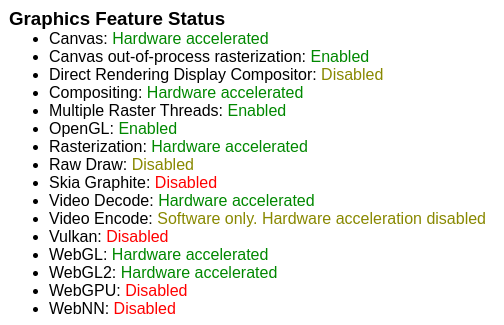Leaflet
- 14 Posts
- 15 Comments

 0·18 hours ago
0·18 hours agoNate Graham is hesitant increase the frequency. When the feature was announced, he repeatedly emphasized it a was a single year popup. He doesn’t want to go back on his word.
It’s a year’s worth of improvements.
Though if you’re using Proton Experimental, you’ve already been receiving these improvements since it uses the staging (or git?) branch.
I believe Proton stable releases use the stable version of wine with fixes backported.

 0·10 days ago
0·10 days agoThe UI is not too complicated, which is why I like it. I use it to automatically unlock and mount my drives in /run/media/drive_name on boot.

 0·10 days ago
0·10 days agoI use Gnome Disks for this, even on Kinoite.

 0·14 days ago
0·14 days agoYes

 0·14 days ago
0·14 days agoYou can do this using Lutris.
- Install it from Flathub
- Open Lutris and have it install the tools it needs (wine, dxvk, etc)
- Close Lutris
- Use Flatseal to limit its permissions; remove network, filesystem access, etc
- Open Lutris and run the game
Note that this isn’t a perfect sandbox. For example, the game can still send a link to your browser to open. Theoretically it could do something malicious with that. Though you could probably work around that issue by changing your default browser to a flatpak version and disable network access there. There might be other small sandbox breaks, but nothing I can think of.

 0·14 days ago
0·14 days agoI used to always remove Fedora Flatpaks, but I’ve grown to like them.
They are built from Fedora RPMs, so follow Fedora’s packaging and building guidelines. Meanwhile Flathub and snap are the wild west of packaging; many flatpaks/snaps are just repackagings of existing packages, which are often built against ancient glibc and libraries for broad compatibility for traditional packages.
They use libraries that are in Fedora’s repos. So any vendored dependencies in a Fedora Flatpak will get automatically updated once the app is rebuilt. Meanwhile on Flathub/snap, those vendored dependencies need to be manually updated (though there are tools/bots for Flathub that automatically check for updates and can even create merge requests). Upstream app developers may not upgrade their apps in a timely fashion.
I also much prefer how Fedora handles runtimes. I only have two Fedora runtimes on my system, Fedora Platform and Fedora KDE 6 Platform, which are both based on Fedora 41. Meanwhile on Flathub, I have 52 runtimes installed. Thankfully most of these are small, but there are still quite a few larges ones. Multiple versions of mesa, multiple versions of Qt, multiple versions of the Freedesktop runtime.
By far the biggest disadvantage is that they’re affected by Fedora’s copyright/patent restrictions. So most multimedia apps I end up installing from Flathub so I have working codecs. But there is some work being done that would allow Fedora Flatpaks utilize ffmpeg-full from Flathub.

 0·16 days ago
0·16 days agoUnless the OS installer chooses to wipe the driver, which Debian’s (non-calamares) installer does.

 0·16 days ago
0·16 days agoalmost all distros include a … driver app
Not really. Ubuntu and Mint does, but Arch, Fedora, and Debian don’t. The latter two don’t even have the drivers in their main repositories.

 0·18 days ago
0·18 days agoThe virt-manager flatpak doesn’t work out of the box, you need to do some setup on the host. At that point you may as well use the deb of virt-manager.

 0·20 days ago
0·20 days agoPhones make the encryption invisible to the user.
That’s not the case on Linux unless you’re willing to put in a bit of work to set up TPM unlocking yourself or use one of the few distros that use TPM by default, like Aeon.
And even then Aeon’s not perfect. Sooner or later the TPM will fail and you’ll have to enter your long backup password and reenroll the TPM.

 0·23 days ago
0·23 days agoThis is my result with the Chromium flatpak with ozone set to auto, AMD GPU.

Even though it says video decode is hardware accelerated, it doesn’t seem to be doing so according to Resources.

 0·23 days ago
0·23 days agoAre you using two separate devices? If so another option could be LocalSend, it allows you to send files over the same network.
I used it for sending a couple hundred GBs of files. Didn’t take too too long. Also avoids unnecessary writes to flash media.

 0·28 days ago
0·28 days agoThey call Bazzite cloud native because they use a lot of technology often used in the cloud, but it’s still a locally run OS with no dependence on the internet apart from getting new updates.
Unlike traditional distros, it uses flatpak for apps, comes with podman (similar to docker) if you want to use containers, and has a more robust update mechanism.



Weird, it’s been working for me for a while. I just need to manually set “media.ffmpeg.vaapi.enabled” to true in about:config.